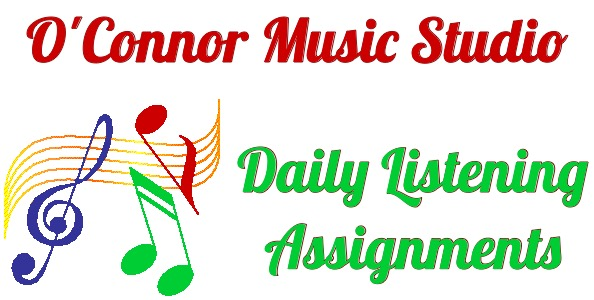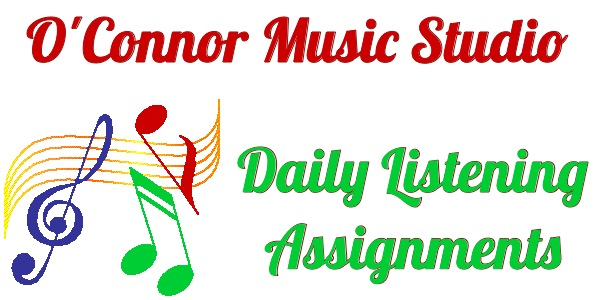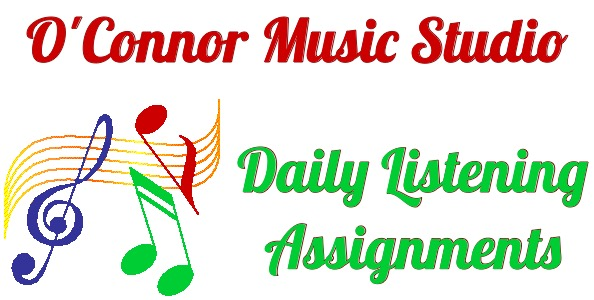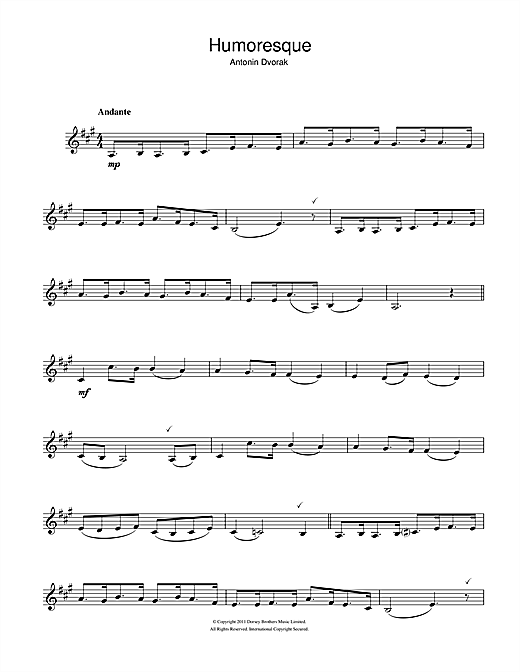Daily Listening Assignments ~ July 3, 2020
Friday, July 3, 2020 by Mary O'Connor | OCMS
Johann Sebastian Bach's towering monument of organ music, with its deep sense of foreboding, will forever be associated with Halloween.
Get a free copy of the sheet music at IMSLP or borrow a copy from the O'Connor Music Studio. I have this arranged for organ, piano, duet, 2-piano, simplified...
It's also available in Piano Maestro, Piano Pronto Encore and Coda
If you want this in a book with other Bach transcriptions, amazon has this: Toccata and Fugue in D minor and the Other Bach Transcriptions for Solo Piano, arranged by Ferruccio Busoni.
Here, Virgil Fox performs it on his Allen Digital Touring Organ.
Diane Bish plays the Massey Memorial Organ at the Chautauqua Institution and talks about this instrument.
Animated organ:
Glass harmonica
Accordion
Cartoon:
Daily Listening Assignments ~ July 2, 2020
Thursday, July 2, 2020 by Mary O'Connor | OCMS
Today's piece is the other one of two pieces that are so often played incorrectly that they have the distinction of being banned from competition in Northern Virginia Piano Teacher competitions.
The first was Fur Elise. This one is Spinning Song by Albert Ellmenreich. It's in many, many piano method books. When I was in 5th or 6th grade, I tore it out of my book, put it in a construction paper cover and played it for some Girl Scout talent show. I have no idea why I couldn't leave it in the book.
The left hand is supposed to sound like the foot pumping the wheel to make it move
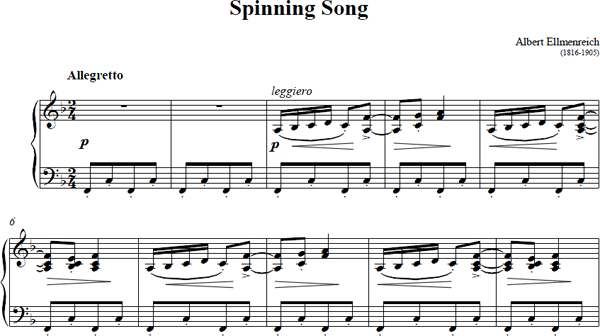
This is part of a larger work called Musikalische Genrebilder, Op.14 which can be downloaded at IMSLP:
Spinnliedchen (Spinning Song), the best known item from the set, seems to be universally referred to as number four. The announcement of the first edition in Hofmeister's Monatsberichte lists it as the fifth item. In Schirmer's 1878 edition (see cover: here) of Op.14 it appears that items two and three were possibly combined into one number (entitled Sorrow and Consolation) so that Spinnliedchen became number four. Perhaps, this is the origin of the re-numbering.
To learn this sheet music, it's available in Piano Pronto Movement 4 and Alfred Premier Piano Course Book 6
Here's a sample:
A tutorial
With scrolling sheet music
For organ
How to conduct(?)
While this piece is not usually popular with other instruments, a trumpet quartet gave it a try
The DMS Percussion Ensemble
Singers from the Londonderry Middle School gave it a try:
The first half of this video is flute tuning. After that is a lovely flute duet.
For clarinet "quartet". Quartet is in quotes because the performer wrote "This is a 'cover' I did of Spinning Song by Albert Ellmenreich. I played all the parts on my clarinet, using the really crappy camera I have. So the sound quality sucks... Also, I don't have a bass clarinet, so the low part is edited down... and it sounds like a saxophone... oh well. lol!"
I can't take any more of these!

Daily Listening Assignments ~ July 1, 2020
Wednesday, July 1, 2020 by Mary O'Connor | OCMS
Today's piece is Antonin Dvořák's Humoresque #7.
Humoresques Op. 101 (B. 187), is a piano cycle by the Czech composer Antonín Dvořák, written during the summer of 1894. One writer says "the seventh Humoresque is probably the most famous small piano work ever written after Beethoven's Für Elise.
Yo Yo Ma (cello) and Itzhak Perlman (violin)
Orchestra:
Ragtime:
Jazz with Wynton Marsalis on trumpet
Zez Confrey gave this a makeover and included Way Down Upon the Swanee River:
Find the original Humoresque on IMSLP. The O'Connor Music Studio Lending Library has versions of Humoresque available at several levels and Confey's Humorestless played in the video above.

